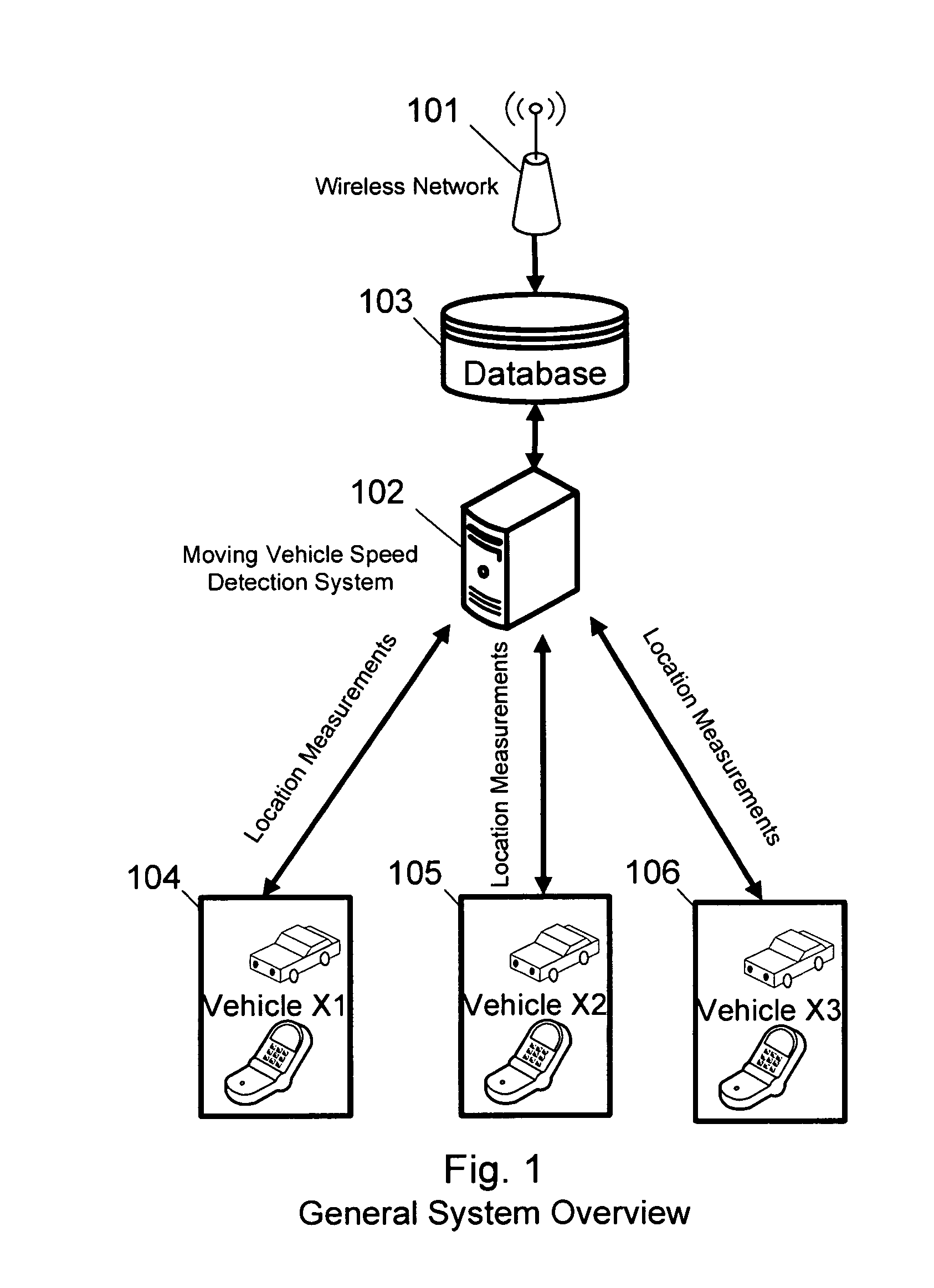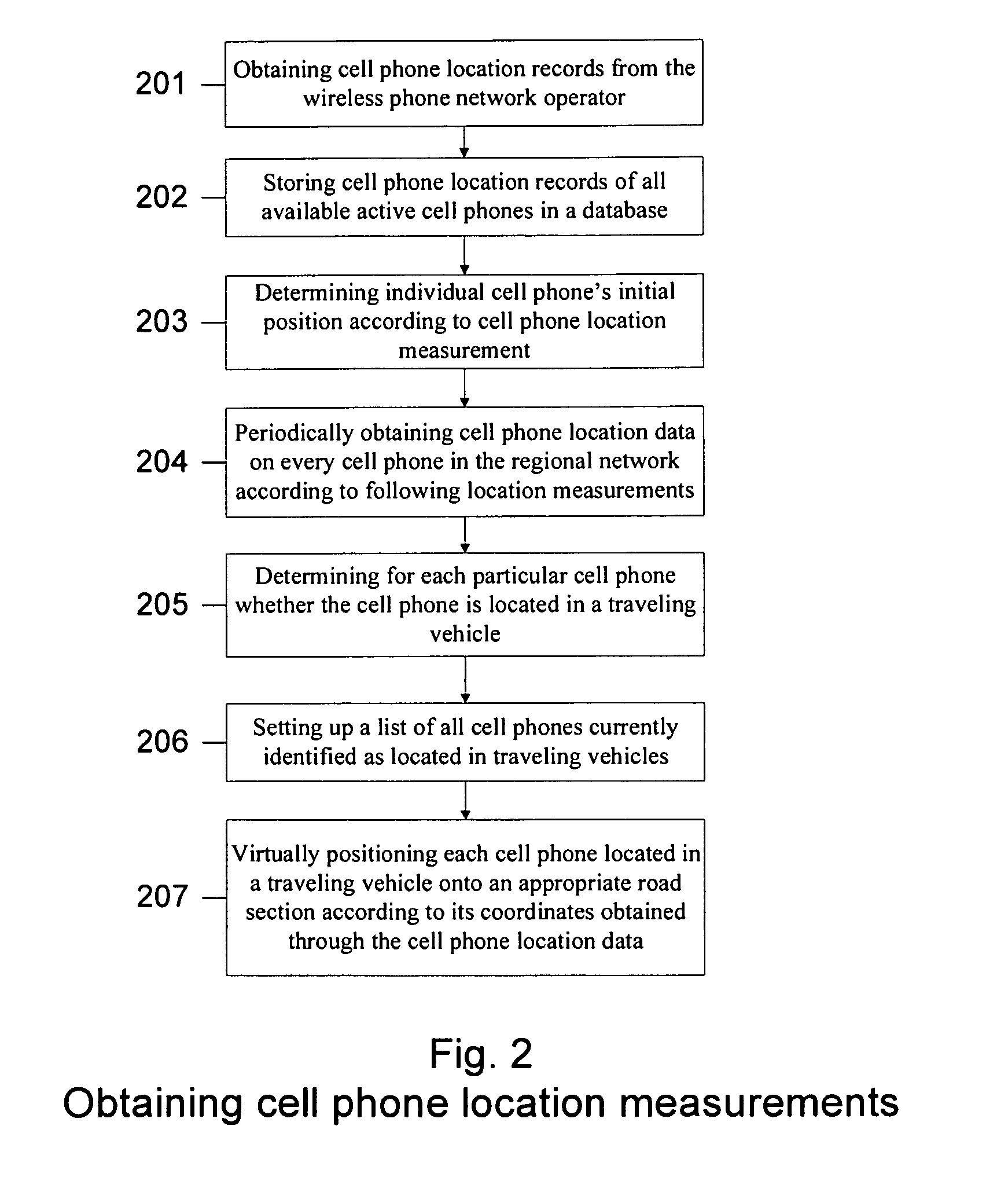Traffic speed enforcement based on wireless phone network
a wireless phone network and traffic speed technology, applied in the field of speed limit enforcement, can solve the problems of increasing cost and labor intensity of traffic-violation enforcement, and the frequency of enforcement is typically high and the effect of increasing the number of times
- Summary
- Abstract
- Description
- Claims
- Application Information
AI Technical Summary
Benefits of technology
Problems solved by technology
Method used
Image
Examples
Embodiment Construction
[0141]This invention provides an automatic real time traffic speed detection method and system based on wireless phone network which is capable of determining a minimum speed at which a particular vehicle may be moving, comparing the detected speed with the speed limit for the certain segment of road on which the vehicle is traveling, determining if the vehicle is moving over the maximal speed limit and if so, either generating a speeding violation ticket to the owner of the vehicle or transmitting information for generating such a ticket to a traffic-enforcement agency.
[0142]The present invention utilizes a cell phone network in which the data from moving vehicles are collected continuously and input into the system. This eliminates the need for developing a dedicated mobile wireless information-gathering fleet and other high-cost devices requiring large capital investments and considerable work force.
[0143]There are two main systems and methods of obtaining cell phone location and...
PUM
 Login to View More
Login to View More Abstract
Description
Claims
Application Information
 Login to View More
Login to View More - R&D
- Intellectual Property
- Life Sciences
- Materials
- Tech Scout
- Unparalleled Data Quality
- Higher Quality Content
- 60% Fewer Hallucinations
Browse by: Latest US Patents, China's latest patents, Technical Efficacy Thesaurus, Application Domain, Technology Topic, Popular Technical Reports.
© 2025 PatSnap. All rights reserved.Legal|Privacy policy|Modern Slavery Act Transparency Statement|Sitemap|About US| Contact US: help@patsnap.com



